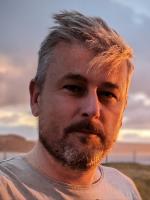
Career
- 2014-date Principal Investigator on Cambridge STFC High Energy Physics theory consolidated grant
- 2011-date Professor of Theoretical Physics, DAMTP, University of Cambridge
- 2022-2023 Scientific Associate, CERN (on sabbatical leave from Cambridge)
- 2009-2010 Reader, DAMTP, University of Cambridge
- 2004-2008 Lecturer, DAMTP, University of Cambridge
- 2004-2009 PPARC Advanced Fellow, University of Cambridge
- 2002-2004 Postdoctoral researcher, Laboratoire d'Annecy de Physique des Particules Theorie
- 2000-2002 Fellow, TH Division, CERN
- 1998-2000 Postdoctoral researcher, Department of Applied Mathematics and Theoretical Physics, University of Cambridge
- 1995-1998 Higher Scientific Officer, Rutherford Appleton Laboratory
Research
Ben is a member of the Department of Applied Mathematics and Theoretical Physics High Energy Physics research group and The Cambridge Pheno Working Group based at the Cavendish Laboratory. He is a particle phenomenologist and is primarily interested in interpreting data coming from the CERN experiments in terms of new particles and forces. Then he tries to rule such new particles and forces out with other data. If this doesn't work, he asks what theoretical framework do they come from and can this explain unanswered mysteries.
Lecturing
Part III (Master's course), lecture notes and accompanying youtube lectures:
Ph.D. Students
- Eetu Loisa: 2021-
- Hannah Banks: 2019-2023
- Maeve Madigan: 2018-2021
- Tom Cridge: 2014-2018
- Sophie Renner: 2012-2016
- Matt Dolan: 2007-2010
- Jordan Skittrall: 2006-2009
- Steve Kom: 2005-2008
Music: Professor Jammin
Selected External Activities
- 2019-date Author of The Review of Particle Physics
- 2018 Quantum Selves art exhibition, Burgh House and Hampstead Museum, London
- 2017 Consultant for Guerilla Science's Intergalactic Travel Bureau stage show
- 2013 TEDx talk, Budapest, Hungary
- 2012 Co-hosted CERN dinner at TEDGlobal event, Edinburgh
- 2005-2006 Scientific Secretary, CERN Council Strategy Group
Publications
Hadron collider sensitivity to fat flavourful Z′s for $ {R}_{K^{\left(\ast \right)}} $
– Journal of High Energy Physics
(2019)
2019,
137
(doi: 10.1007/jhep03(2019)137)
An anomaly-free atlas: charting the space of flavour-dependent gauged U(1) extensions of the Standard Model
– Journal of High Energy Physics
(2019)
2019,
82
(doi: 10.1007/jhep02(2019)082)
Beyond the standard model
– CERN Yellow Reports: School Proceedings
(2019)
6,
113
(doi: 10.23730/CYRSP-2019-006.113)
Third family hypercharge model for $ {R}_{K^{\left(\ast \right)}} $ and aspects of the fermion mass problem
– Journal of High Energy Physics
(2018)
2018,
75
(doi: 10.1007/JHEP12(2018)075)
Uncertainties in the Lightest $CP$ Even Higgs Boson Mass Prediction in the Minimal Supersymmetric Standard Model: Fixed Order Versus Effective Field Theory Prediction
– European Physical Journal C
(2018)
78,
573
The case for future hadron colliders from B → K(*)μ+μ− decays
– Journal of High Energy Physics
(2018)
2018,
21
(doi: 10.1007/jhep03(2018)021)
The inclusion of two-loop SUSYQCD corrections to gluino and squark pole masses in the minimal and next-to-minimal supersymmetric standard model: SOFTSUSY3.7
– Computer Physics Communications
(2017)
219,
339
(doi: 10.1016/j.cpc.2017.05.006)
Dissecting Multi-Photon Resonances at the Large Hadron Collider
– The European Physical Journal C
(2017)
77,
595
- <
- 5 of 23

